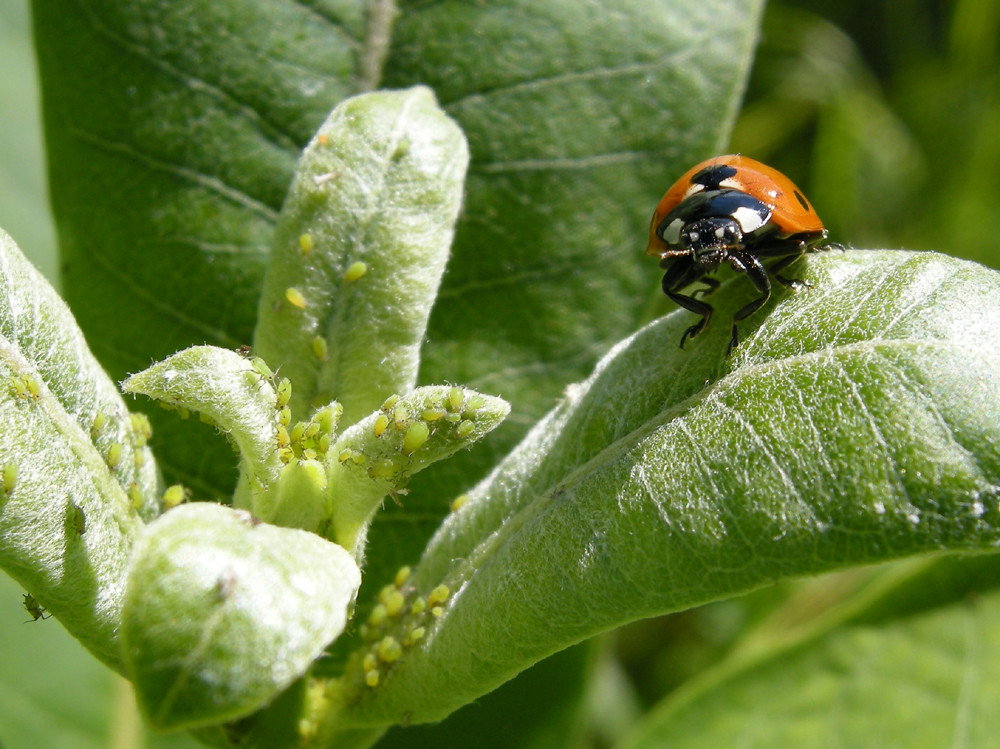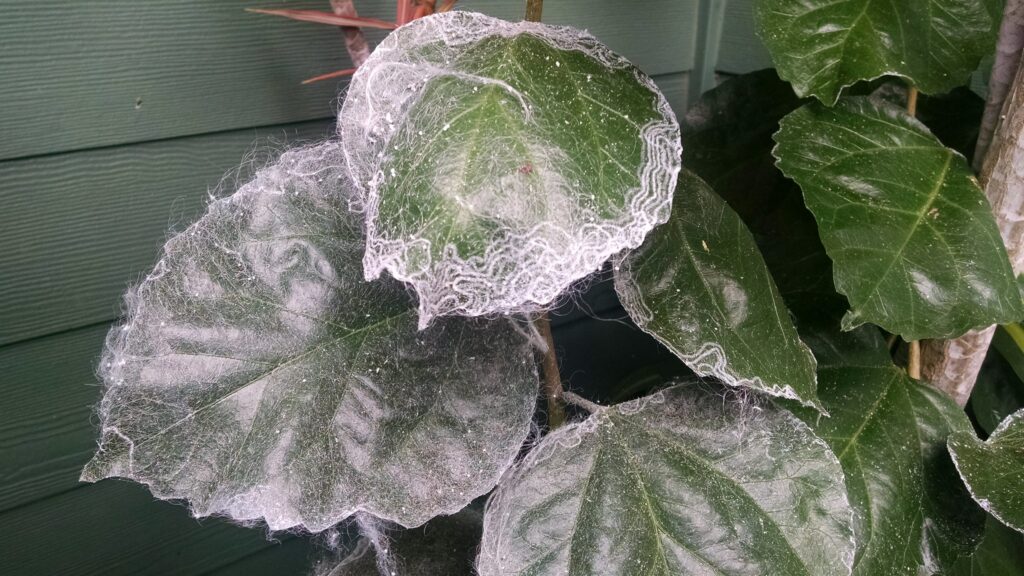Houseplants pests, diseases and other problems
Unfortunately, houseplants can suffer from pests, diseases, and cultural problems. Even the most experienced gardener can have problems with houseplants at some point. The key is to identify the issue as soon as possible and treat it before it becomes a severe problem. This section is intended to help you relate common symptoms with the causes so that you can cure your plants quickly.
Please note that if you keep your houseplants outdoors for part of the year, they may be exposed to pests and diseases from your yard. Carefully inspect your plants while they’re outside and make sure they are pest and disease free when you bring them in to your home.
Houseplant Pests
As far as pests go, you’re most likely to encounter problems with aphids, white flies, mealy bugs, spider mites, and scales. Here’s more information about these common pests and how to deal with them.
Aphids:
Aphids are tiny bugs that live and feed in groups. They can be different colors including white, green, brown, or even orange. Look for them especially on new plant growth and young flowers. An easy way to treat aphids is with a blast of high-pressure water from a hose.

Mealybugs:
You can recognize the mealy bug by its white, fluffy, wax coating. They typically appear on the underside of leaves. Try using a little alcohol on a cotton ball and applying it to the mealy bugs. The alcohol will penetrate the wax and eventually kill the pests.
Mites:
Mites are very small insects. They can form a thin web over the plant. Affected plants’ leaves may appear spotted and the flowers may start to look unhealthy. Try blasting off the mites with water.
Scales:
Scales appear as sticky areas on leaves and stems. If there are tiny dots that you can remove with your fingers, you may have scales. Remove them by hand and carefully monitor the plant for more outbreaks.
Whiteflies:
White flies are very small flying insects that will cluster around a plant and fly away when you touch the plant. Use a natural or organic pesticide to control them.

For another way to get rid of these pests, try diluting a very small amount of Castille soap in water and wash the leaves of your plants. Depending on the plant, you can also choose to cut off parts of the plant that have a serious infestation of bugs.
Like all plants, houseplants can suffer from a variety of diseases. Plant diseases are typically caused by viruses, bacteria or fungus. Houseplants suffer less from diseases than plants in your garden because you have more control over the environment they grow in.
One of the best ways to prevent diseases is to keep all your gardening tools clean and to use sterile growing mediums when transplanting.
Other Problems with Houseplants
Improper growing conditions, overwatering, root bound, overfertilizing.
Many of the problems you may encounter with your houseplants are due to improper growing conditions. If you can’t find a problem with pests or diseases, check to make sure the plant has enough light, that you’re watering properly, and that your plant isn’t located in an area where it’s exposed to extreme heat or cold.
Yellowing leaves are often a symptom of plants that have been sitting in water for extended periods of time. Leaves and flowers may also begin to drop if the soil has remained wet for too long. Also look for brown, rotting roots. If you have yellow leaves and dropping flowers, check for diseases or lack of oxygen. You may need to change the soil so the oxygen reaches the roots.
Yellowing of the lower leaves only is probably due to too much water or a dramatic change of environment. If leaves are yellowing and falling off throughout the plant, check the soil to make sure it’s draining well. If the soil looks good, try increasing the time between watering. Also make sure that your plant isn’t exposed to extreme changes of temperature.
If the plant is yellow or discolored without the leaves falling off, or if the plant overall looks like it’s not growing strong, check for a root bound plant. This problem may also be caused by extreme levels of sunlight.
If new growth on your plant isn’t robust, check the roots to see if your plant is root bound. You may also need to water your plant more frequently. You can also consider a change of soil. Try a fresh batch of potting soil to increase air circulation.
If your plants are growing rather spindly and weak, you may need to place your plant where it can get more sunlight. Check also to see if the plant is next to a heater or other heat source.
Another common problem with houseplants is overfertilizing. This will cause browning of the tips of the leaves due to fertilizer “burning.” Avoid the use of harsh, potentially damaging chemical fertilizers. Browning tips may also occur when you let your plant dry out too much. Very low temperatures may “burn” a plant in a similar way.